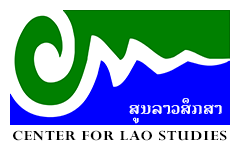What is molam?
Molam is a traditional storytelling and entertainment form in the Southeast Asian country of Laos, and the northeastern part of Thailand (formerly part of Laos), known as Isaan.
The term molam is a combination of the term mo, meaning “master,” and lam, meaning to sing in a style called lam. Literally then, molam means “master of the lam singing style,” but the term is also used more generally to refer to performances of the lam genre.[1]
Molam is usually further defined by its substyle, such as molam reung, molam phoen, molam mu, etc. Molam reung, the form of molam performance that the Center for Lao Studies is currently developing, is a musical folk drama. It is sometimes referred to as “Lao opera,” although it differs greatly from European opera. In her seminal study, linguist Carol Compton writes that molam reung is “a synthesis of extemporaneous poetry, folk music, and dance.”[2] Molam reung is distinguished by its witty, rhythmic banter sung by the performers and the dances they create to accompany it, and the playing of the khaen, a traditional bamboo reed instrument. [include link to photo of khaen]. Nowadays, molam is also performed using modern instruments, such as keyboards or guitars.
The performance of molam reung, which originated in rural villages in Laos, weaves together the tales of a varied cast of characters ranging from commoners to kings. Audience members follow the characters on their journeys, which can include spectacular battle scenes and epic adventures as well as events from everyday life. Importantly, the storylines are adaptable - they can be shortened or lengthened according to the event and the composition of the audience - and the performers must be adaptable as well, able to change the songs and dance of molam reung to meet the requirements of a given event or story.
Furthermore, molam reung narratives are didactic; they provide commentary about current events and teach lessons about accepting the consequences of one's choices and actions.
As such, molam reung is as much education as it is entertainment.
[1] There are numerous romanized spellings of molam in English. We have seen it written as molam, morlam, morlum, mohlam, and others. For consistency, the Center for Lao Studies uses molam except when quoting another author who uses an alternate spelling.
[2]Carol J. Compton, Courting Poetry in Laos: A Textual and Linguistic Analysis. Doctoral Dissertation, Northern Illinois University, Center for Southeast Asian Studies, 1979.




